Sensitive Topics in Recent Disney Films
It’s common for titles to be assigned to the eras of Disney’s production history. The 1950s and 60s have been dubbed ‘The Silver Age’; the 80s are ‘The Dark Age’, whereas the 90s are ‘The Renaissance’. Each title is a retrospective imposition, intended to reflect the quality, reoccurring themes and commercial success of films produced at the time. But what about our current era? Is there a name that encapsulates Disney’s most recent ventures? While consensus suggests ‘The Revival’, it could just as well be ‘The Emotive Age’.
If there’s one thing that connects Disney and Pixar films produced this decade, it’s their willingness to consistently include weighty and emotionally hard-hitting topics. The range of issues has been surprisingly broad: prejudice, grief , living with disability, and emotional maturity, but this is just scratching the surface. None of these modern films stop at depiction either, as sensitive themes are not only touched upon, but incorporated into stories as major plot points. This article aims to fully investigate this theme.
Disney’s World: Innocence and Sanitisation
Of course, depicting sensitive material hasn’t always been on the Disney agenda. When he first began creating feature-length animations, Walt Disney’s intention was to appeal to “that fine, clean, unspoiled spot deep down in every one of us,” which, according to his claim, “the world has made us forget” 1 His cynicism was not misguided. Disney’s earliest works were produced in the midst of socio-political turmoil, caused by the Great Depression, the outbreak of Second World War, and its aftermath. But instead of addressing contemporary issues of war, death and unemployment, his films disguised them behind a veneer of innocence and traditional values. Nowhere is this more evident than in his sanitised versions of fairy tales.
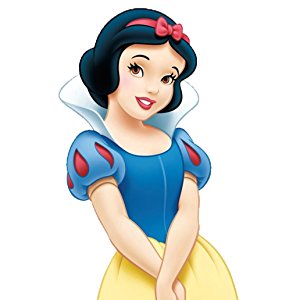
Disney’s Snow White and the Seven Dwarfs (1937) is a prime example. It omits several ‘mature’ features from the Brothers Grimm story, including the deaths of Snow White’s parents and the Evil Queen’s desire to eat her body parts. This is perhaps understandable, but Disney also attempted to transform the morals of the tale, which proves to be far more insidious. Grimms’ Snow-White was intended as a Bildungsroman, or a coming of age story, so that young girls could be shown the struggles that come with maturation and womanhood through the princess’ journey. (The apple-biting scene is generally interpreted as a metaphor for sexual temptations, for instance). Although Disney’s Snow White does grow up and marry, she is never presented as anything other than girlishly innocent. Her wide eyes, flat chest and brightly coloured dress are all indicative of prepubescence, despite the fact that she is supposedly well into her teens. She does not bite the apple onscreen either, which removes obvious connotations of sexual agency. However, she does learn the domestic skills required of a housewife, epitomised by her decision to “wash and sew and sweep and cook” for the dwarfs. Disney clearly intended for Snow White to grow into a model 1930s woman, yet he prevented her from undergoing any of the struggles or bodily changes associated with maturation. Instead, his Snow White has the best of both worlds: upholding traditional gender roles while retaining her childlike innocence (presumably) forever.
Disney’s Cinderella (1950) also underwent something of a bowdlerisation. The stepsisters’ pecked-out eyes were naturally censored, but so too were some of the tale’s more touching moments. The Brothers Grimm emphasised the death of Cinderella’s mother, showing how Cinderella often grieved the loss by crying over her grave. In fact, she is at her mother’s grave when her wish for a new opportunity is granted, symbolically showing acceptance of parental death as a catalyst for her transformation. This could have been a poignant and sensitive addition, yet Disney chose to disregard it. Instead, he adopted material from an earlier Cinderella tale, and included the Fairy Godmother as a maternal substitute who magics away Cinderella’s dismal situation. Some of Disney’s colleagues did protest the ease of this transformation. Fellow screenwriter Maurice Rapf suggested that Cinderella should be less passive, and learn to stand up to her abusive family. “My thinking was you can’t have someone who comes in and changes everything for you,” he said, “You’ve got to earn it.” 2 “But as Rapf himself later complained, next to Disney’s vision of innocence and simplicity, his ideas were not taken seriously.
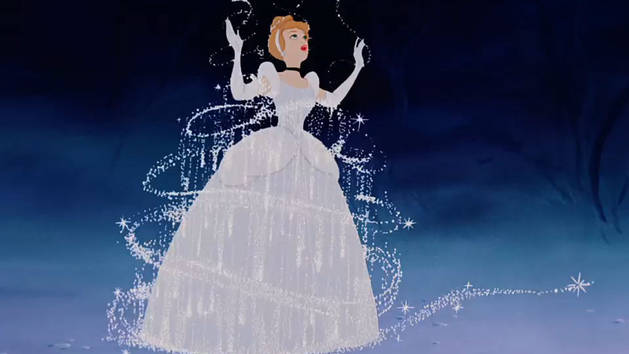
This is not to say that early Disney films never engaged with weighty topics. Bambi (1942) famously and controversially depicted maternal death, although it was by no means the film’s focus. Yet in Disney’s “fine, clean, unspoiled” world, there was generally little room for realism or sensitive subject matter. We can only imagine the detrimental effect this might have had on Disney’s original audience. If girls of the 30s and 50s grew up idealising prepubescent housewives, and believing that their problems would be solved with the wave of a magic wand, then adulthood in Cold War America could only be cruel to their expectations.
Thankfully, as the decades passed, the Disney tradition of naivety and bowdlerisation gradually began to decline. The following sections of this article will explore four recent Disney and Pixar films in detail. Each will be analysed in terms of sensitive or emotive content, and in particular, how this is regulated to present a positive message for children.
(Also, SPOILERS AHEAD for the films in question).
Internalised Racism in Zootopia
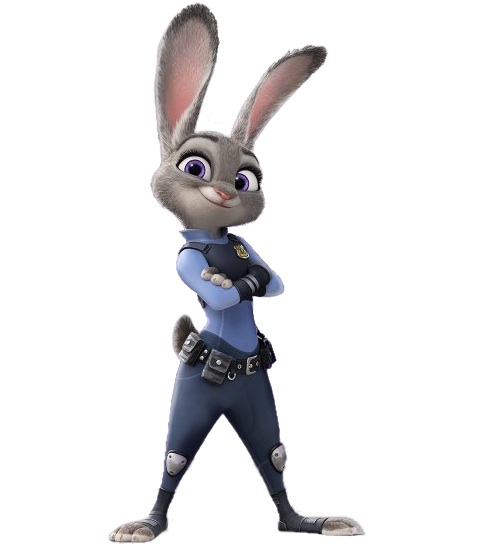
At first glance, Zootopia (2016) seems like a standard comedic Disney romp. Yet beneath the cutesy veneer of punny titles and anthropomorphised animals comes a sensitive and well-developed message. In the world of Zootopia, predators and prey live as one, having long thrown off the shackles of their feral past. However, it quickly becomes clear that old stereotypes die hard.
The protagonist is Judy Hopps: a rabbit from a rural town who dreams of making it as a police officer in the big city. Much of the early film depicts her struggle to be taken seriously due to her species, as Judy is patronised by colleagues and allocated the most trivial tasks despite her aptitude for the job.
From this point, we could probably hazard a guess at the plot’s development. Judy battles against the bigotry and intolerance of those who underestimate her; Judy saves the city after a daring struggle, and prey are treated with more respect thereafter. However, Zootopia proves to be far more nuanced than it initially promises. Judy is eventually given a proper assignment—investigating the disappearance of predators, all of whom have reverted to a feral state—and it is here that we learn that she herself is not immune to prejudice. Her suspicion of foxes causes her to be wary of Nick Wilde, a petty con artist with whom she forms an unlikely partnership. More seriously, she makes thoughtless comments at a press conference, implying that predators have a predisposition for savage behaviour. Her actions result in a city-wide crisis, as tensions between predators and prey surge to boiling point.
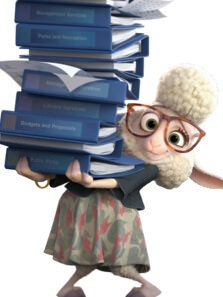
Yet with every mistake comes a second chance, and such is the way in Zootopia. Judy’s guilt and sense of justice motivate her to reconcile with Nick and uncover the truth behind the situation. Together, they discover that the missing predators’ feral behaviour has been induced by toxins as a part of an elaborate ploy to initiate prey supremacy. The mastermind behind the plot is Assistant Mayor Dawn Bellwether, a sheep who experienced similar condescending behaviour to Judy during the first half of the film. Her transition from victim to villain is a disturbing one, and serves as a timely reminder that paying evil unto evil can only cause further harm. By the end of Zootopia, predators and prey have resolved their differences, and are able to dance together during the musical finale. The peace between them is a tentative one—liable to be threatened whenever the next scandal emerges—but after all the mistrust and discrimination shown throughout, it can only be seen as a step in the right direction.
Ultimately, what separates good and evil characters in Zootopia is not whether they are prejudiced, but how they develop when these prejudices are challenged. Judy gradually learns the errors of her harmful assumptions, and seeks to make amends to the city’s predators. Her innocuous cheetah colleague is apologetic when he realises that he has indadvertedly offended her. Even Judy’s childhood bully, Gideon, is remorseful about his former behaviour towards prey. These examples contrast with Bellwether, whose experiences with intolerance and humiliation hardened her own bigotry, and caused her to seek revenge rather than reconciliation. By the end of the film, Zootopia’s message becomes clear. Whether we like it or not, we all harbour racial prejudices, and it is only by recognising and working to overcome these that we can build a fairer and more tolerant society that works for everyone.
Disability as Strength in Finding Dory
Who could forget Pixar’s Finding Nemo (2003)? Boasting stunning visuals, colourful characters and a plotline of epic proportions, the film was an instant hit with children and adults alike. Significantly, it was also one of the first Disney films to depict both physically and mentally disabled protagonists. The eponymous Nemo sports a withered fin—a relic from a prenatal barracuda attack—while Dory, the blustering blue tang, suffers from severe short-term memory loss. Neither disability wholly defines the characters, and the audience is sternly reminded that it is not a reason for them to be mocked either. Yet, on the whole, such disabilities are presented as hindrances. While Nemo does overcome the challenges that are thrown his way, it is very much in spite of rather than because of his handicap. Likewise, Dory is only genuinely useful to the plot when she is able to remember information: in other words, when her difficulties are disregarded.
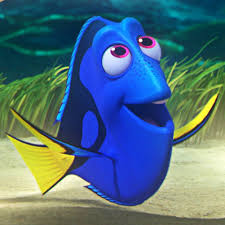
Not so in Finding Dory (2016). As the title suggests, the sequel focuses predominantly on Nemo’s companion, and follows her quest to locate her parents after recalling fragmented childhood memories. Dory’s upgrade from sidekick to protagonist alters audience perspective, which allows the emergence of a more developed portrayal. Her memory loss is no longer a comedic trait exploited for comic relief, but a complex psychological condition that remains central throughout.
With her friends’ assistance, Dory traverses the ocean and arrives at the Marine Life Institute in California, where she and her parents once resided. Her memory problems initially act as an obstacle to her journey, as she accidentally endangers Nemo and struggles to recall crucial instructions. However, when further flashbacks come to light, we begin to see a different picture. Many of these scenes detail her parents’ attempts to teach her techniques and coping strategies to help her through her disability. Her love for shells was used to help her find her way home. Fun rhymes and phrases made her remember otherwise-ellusive information. Most importantly of all, Dory’s positive ‘just keep swimming’ attitude developed during this time, as a direct result of her training. This creates an almost paradoxical revelation: that Dory’s disability is in fact responsible for her greatest strength. Others too are shown to benefit from Dory’s mindset and singular capabilities. Whenever Marlin and Nemo become disheartened, they consider what Dory would do in attempt to imitate her determination. Similarly, Dory’s ability to read human writing and communicate with whales—skills originating from her childhood—are consistently invaluable throughout her quest.
This would be liberal enough in its own right, but Finding Dory has the additional strength that many background characters exhibit disabilities too. Across the film, we meet a seven-legged octopus (or ‘septopus’) named Hank; a myopic whale shark named Destiny; and Bailey, a beluga whale whose past head injury has left him believing he can no longer echolocate. The interaction here between psychical and mental disorders is surprisingly nuanced. Bailey’s affliction has a psychological root, likening it to anxiety or post-traumatic stress disorder. Similarly, Hank’s traumatic experiences have caused him to fear ocean life. There is obvious research and consideration put into the portrayals, and happily, this trend continues throughout. None of the handicaps are dropped when the plot requires it; instead, it is by relying on each other that the characters break through their shortcomings. With Destiny’s tireless support and instruction, Bailey finally relearns his echolocation. In return, Destiny often relies on Bailey to act as her eyes when she herself is struggling to see. Even Hank is persuaded to give the ocean another go when faced with Dory’s encouragement and optimism.
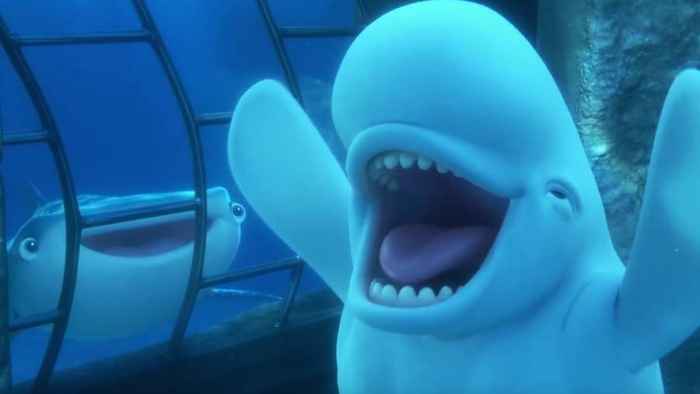
Of course, not everything about Finding Dory is perfect. This includes its portrayal of disability; many have criticised the decision to depict Gerald, a sea lion whose unconventional behaviour (possibly stemming from a learning disability) results in exclusion and bullying from his peers. Ambiguous disorders aside however, Finding Dory emerges overall as a triumph which imparts a positive message to children. Gone is the tragicomic sidekick of Finding Nemo—now Dory can be respected as a complex individual who does things in her “own special Dory way.” Seeing characters support each other through their disabilities is incredibly beneficial, as it both encourages children to assist their disabled friends, and reminds them that it is important to reach out when they need help themselves.
Emotional Maturity in Inside Out
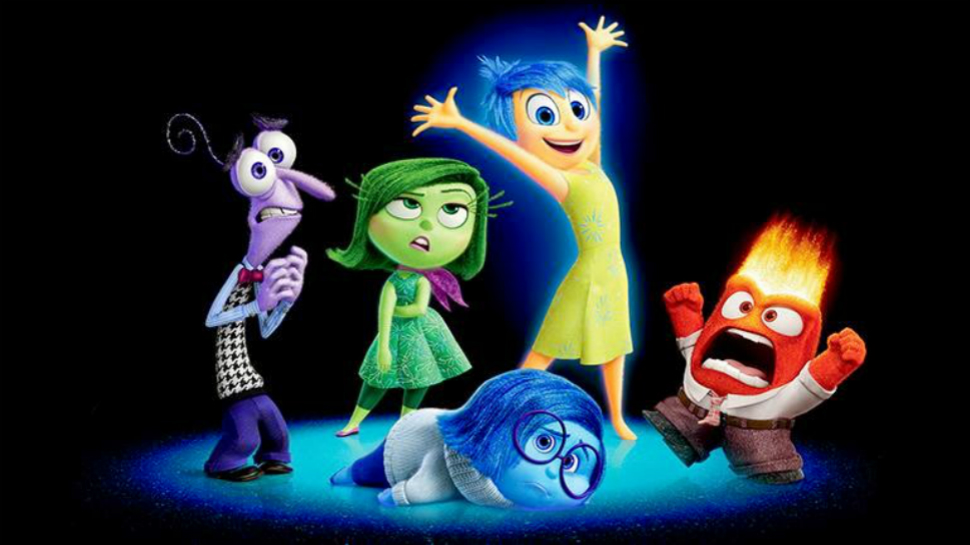
As demonstrated by the examples thus far, personification is a typical convention of Disney films—even to the point where it’s expected. Pixar’s Inside Out (2015) takes the trope a step further, as its protagonists are not anthropomorphised fish or mammals, but emotions. The plot predominantly takes place in the head of Riley Andersen, a fun-loving eleven-year-old who lives with her parents in Minnesota. Her five basic emotions—Joy, Sadness, Anger, Fear and Disgust—have been sentient since her birth. While Joy acts as the commander, all play their part in influencing her thoughts and behaviour through a control panel as we are taken, literally and metaphorically, through the life of Riley.
Yet not everything is blissful within Riley’s mind. An emotional power-imbalance is evident from the outset, as Joy fails to understand Sadness’ utility and strives to limit her influence. While Riley’s childhood remains idyllic, this does not pose a problem. However, when her family move to San Francisco, away from her friends and hobbies, Riley struggles to cope. Her failed attempts to suppress her sadness leads to unrestrained outbursts, causing her to cry in school when previously happy memories of her old life grow hauntingly bittersweet. A struggle between Joy and Sadness ensures, and both are sucked away from headquarters and become lost in the recesses of Riley’s mind. Fear, Anger and Disgust attempt to imitate Joy in her absence, to predictably catastrophic results. Meanwhile, Joy and Sadness must navigate their way back to headquarters, hindered constantly as Riley’s personality crumbles away around them.

For a film with an ingenious premise and a well-executed plot, there is much to praise about Inside Out. Yet perhaps the most commendable aspect is the depth it gives to mental health and emotional development. During the climax, Fear, Anger and Disgust cause Riley’s control panel to freeze over, rendering her unable to experience any emotions whatsoever. This is a subtle nod to depression and other psychological disorders, but crucially, it is not portrayed simply as ‘being sad’ as it often is in other media. Indeed, Sadness proves to be the only emotion capable of freeing Riley, suggesting that expressing sorrow is pivotal to maintaining a healthy and balanced mind. Even Joy gradually learns to appreciate Sadness’ value in enabling comfort and catharsis. It is only in moments of despondency, she realises, that others are prompted to reach out to Riley when she most needs it. To further drive the point home, a brief excursion into Riley’s mother’s mind shows us that Sadness is her dominant emotion; far from causing constant unhappiness, this makes her more empathetic and emotionally attuned.
Unlike Snow White, Inside Out does not shy away from the inevitability of ageing either. In a particularly poignant scene, Riley’s imaginary friend Bing Bong fades away in her ‘memory dump’—a chasm where bygone memories are forgotten. This may be harrowing for children to witness, but as adults, we understand its significance. After all, abandoning old hobbies and interests is a natural phase of growing up. Bing Bong’s death serves as a reminder that Riley will not remain a child forever, and that her growing ability to form real-life connections renders an imaginary friend obsolete.
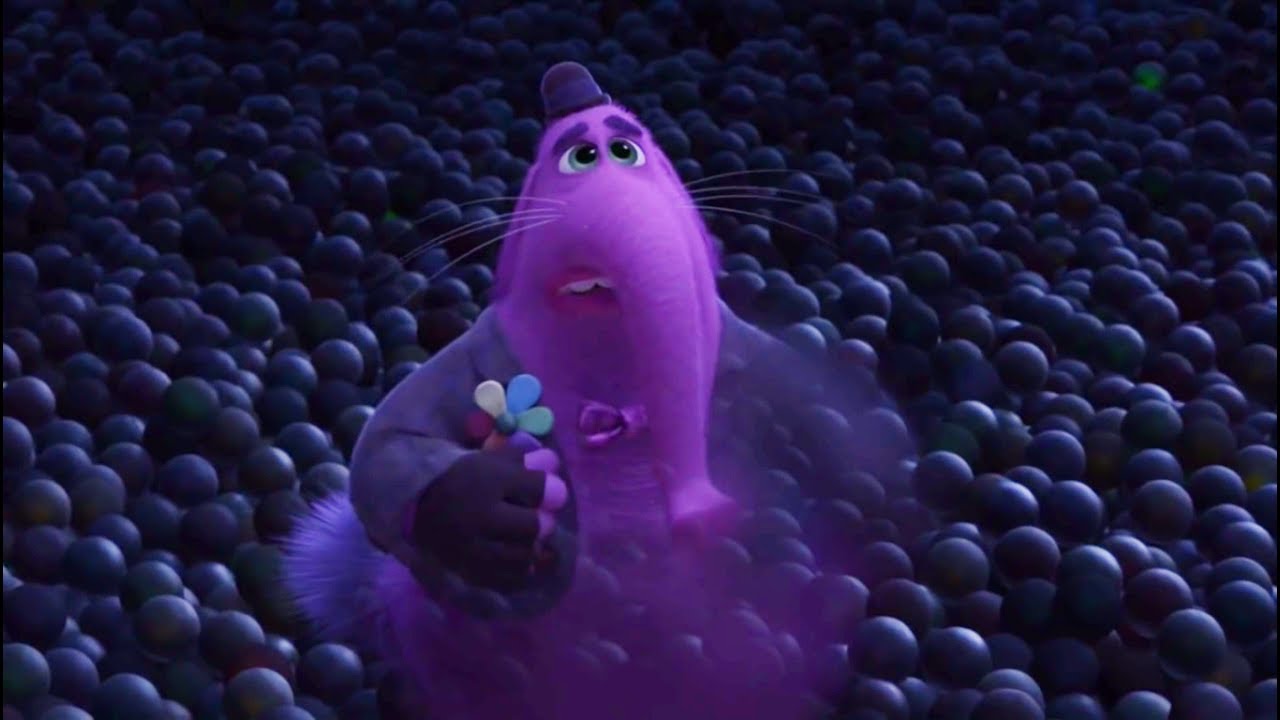
This is reinforced in the final scene, in which all five emotions humorously puzzle over a ‘puberty’ button on their upgraded control panel. Riley has aged a year, and is now ready to begin a new chapter of her life. The acknowledgement of her approaching physical maturity emphasises the need for emotional maturity in tandem, which brings our attention back to the film’s central message. As Inside Out reminds us, not everything in our lives will be sunshine and roses. Everyone experiences challenges and heartbreak as they mature, and by suppressing so-called ‘negative’ emotions such as sadness, we only succeed in exacerbating the situation. Instead, we must learn to express our feelings openly and in a constructive manner, allowing our friends and family to help us through life’s darkest moments.
Overcoming Grief in Big Hero 6
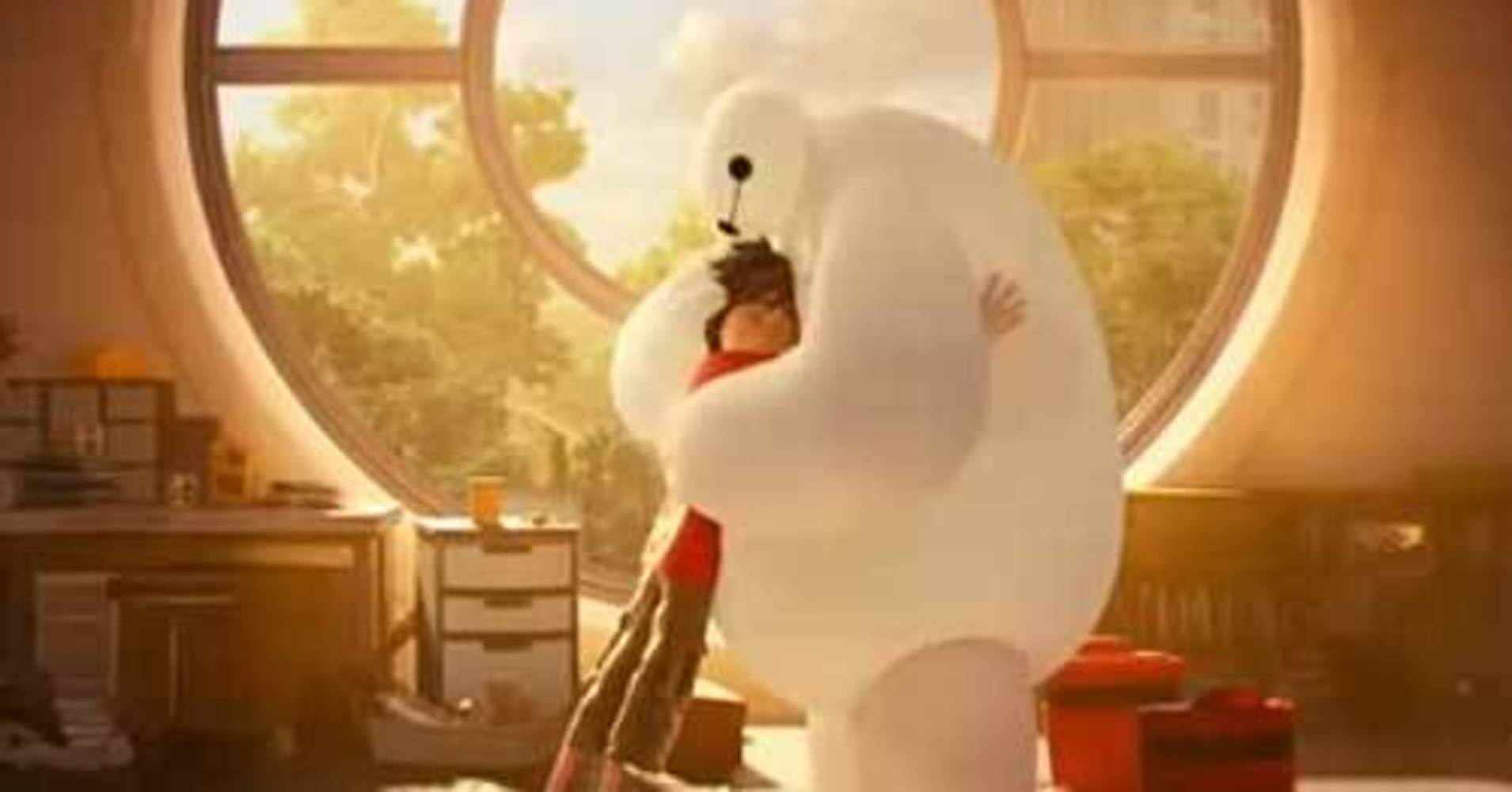
Much like Inside Out, Disney’s Big Hero 6 (2014) is also concerned with healthy emotional expression. Rather than simply focusing on the ups and downs of relocation, however, this film takes on a far weightier topic: the death of a close family member.
Hiro Hamada is a teenage robotics enthusiast who lives in the futuristic city of San Fransokyo. His elder brother Tadashi designs healthcare robots at the local Institute of Technology, which Hiro also longs to attend. It even seems that he might be in with a chance after creating an inspired collection of tiny robots (or ‘microbots’ as they are known). But tragedy strikes soon after, as an apparently accidental fire ‘destroys’ Hiro’s microbots and kills Tadashi. Hiro is naturally left numb and traumatised. He isolates himself entirely, refusing to attend school, see his friends, or partake in any of his hobbies. Then, after activating Tadashi’s robot Baymax by accident several weeks later, he stumbles upon a discovery that suggests the fire was perhaps not-so-accidental after all. Hiro is spurred to action, as he attempts to reclaim his stolen microbots and drive Baymax towards robotic revenge.
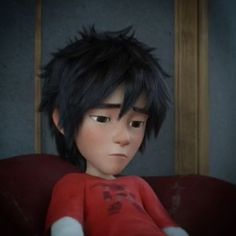
It’s important to remember that Big Hero 6 is, first and foremost, a film about robots. This is what gives it a unique selling point, and ensures that it will appeal to children. But fundamentally it is Tadashi’s death—as well as Hiro’s emotional response—that truly drives the plot. After his initial stage of depression, Hiro channels his grief into anger. As viewers we are inclined to support his quest to destroy the fire’s perpetrator, and we are equally phased by the unsettling reminder that keeps cropping up: vengeance is not what Tadashi would have wanted. This central message sets Big Hero 6 apart from other Disney titles (such as The Lion King (1994)), in which revenge and catharsis go hand-in-hand. While this doesn’t automatically make Big Hero 6 a superior or more popular film, the result is undoubtedly more mature and helpful for children who have experienced loss themselves.
Baymax makes all the difference here. His credentials as a healthcare robot enable him to recognise Hiro’s grief for what it is, and devise a strategy which helps him to cope. He prompts Hiro to reconnect with his friends and the outside world, gives him a plentiful supply of hugs, and reiterates that his pain is natural. In one scene, when Hiro is most obviously struggling with his loss, Baymax even shows him videos of his creation, which features Tadashi prominently. His brother’s onscreen presence soothes Hiro, and also reminds him that Baymax was created to help people rather than to hurt them. Seeking revenge might bring about some form of temporary satisfaction or respite, but he would not truly be honouring Tadashi. Nor indeed would it be beneficial in the long run. As Baymax demonstrates, the healing process may be slow and difficult, but it is the only way to keep a loved one’s spirit alive.
Much like Zootopia, viewers are also shown an example of ‘what not to do’ in the shape of a villain. It transpires the man responsible for starting the fire, Callaghan, is in turn seeking revenge for his daughter’s loss. His destructive coping mechanism is held up as a foil to the therapeutic care Hiro receives from Baymax. More significantly, he also serves as a stark reminder of how warped and bitter Hiro himself could have become. Callaghan’s motives are just like Hiro’s: understandable and perhaps even sympathetic. Yet his single-minded pursuit of his daughter’s killer caused him to become morally bankrupt, and to forget the person he was supposedly doing it for in the first place. Thanks to Baymax and his friends, Hiro has quite possibly had a lucky escape.
By the end of Big Hero 6, Hiro is a changed boy. He has been able to move on with his life, pursue his goals, and is happy. Despite this, he has never truly forgotten Tadashi, and keeps the memories of his brother close as a guiding and comforting force. He represents a model that children can learn a lot from, particularly children who have undergone a bereavement. Big Hero 6 teaches us that there is no shame in grieving, as it is a natural and necessary process. However, it also shows us that grief and vengeance make a damaging combination that ultimately helps no-one. Through this, children can learn to grieve through gradual healing, allowing them to remember their loved ones and celebrate their achievements in life.
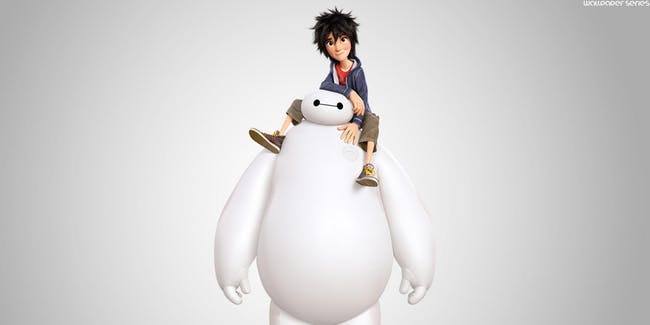
The Positive Power of Identification
As my analysis has demonstrated, Disney’s recent ventures show surprising depth when engaging with emotionally hard-hitting topics. Yet this still begs the question: is this necessarily appropriate for children’s films? All the examples listed above have achieved immense success on the whole— smashing box office records and receiving consistent praise from reviewers. Nonetheless, they have not been without their critics. Should we agree with the reviews claiming that Inside Out is too upsetting to be suitable? 3 How about the parents who insist their children were frightened by Zootopia? 4 Or perhaps Disney films are just too dark in general these days. Framing plotlines as a struggle against real-world issues rather than mean individuals is undoubtedly a step towards realism. Yet if these complaints are to be taken seriously, this development could well be at the cost of alienating Disney’s youngest viewers.
Such parental concerns are not without merit. However, their flaw lies in a failure to acknowledge a harsh truth: it is impossible to permanently shield children from misfortune. The topics explored were not chosen randomly, but because of their pervasiveness in real life. 1 in 10 children today will grow up with a disability; 1 in 20 will experience a serious bereavement before their teenage years; and with racial hate crimes on the rise, it is likely that many children will find themselves either the victims or the accidental perpetrators of prejudice. Perhaps most importantly of all, every child is certain to experience bouts of sorrow, fear and anger as they grow up. Disney’s triumph is that they not only acknowledge these facts, but also present mature coping strategies to assist children in dealing with them. Portraying this through the filter of cartoons and relatable heroes also works in their favour, as it helps to normalise distressing issues while still keeping the films firmly kid-friendly.
When considering this shift, it is worth pointing out that the audience are as responsible as the studio. One of the reasons for Disney’s success throughout the decades is its enduring ability to gauge the zeitgeist, and produce exactly what its current audience wants to see. Back in the 1930s, Walt Disney correctly predicted that his viewers wanted a distraction: a retreat away from their problems into a fantasy world of innocence and tradition. Audiences today, however, are no longer satisfied with pure escapism. The rise of the internet and mass-media means that sufferers—whether or grief, bigotry or disability—now have an open platform to express themselves. These voices have grown ubiquitous, and consequently, they are not so easy to ignore. The upshot is that our society is far more attuned to the worlds’ injustices than it was eighty years ago: just look at modern protests and awareness weeks for evidence. Once again, Disney has duly noted the change in attitude, and has reacted accordingly.
Of course, this remains a far cry from Disney’s appeal to “the clean, unspoiled spot”. Instead of idealising innocence, or brushing over problems with handsome princes and magical benefactors, Disney films today have learnt to tackle tough subjects head-on. Does this mean that Disney is turning in his grave? Possibly. But it is important to remember that this is not the be-all and the end-all: Walt Disney was, ultimately, a man of his time. Although he may not have approved of recent changes, they are a sign of how far the company has come in its time. These days, Disney is willing to adapt to a new age that recognises and explores the difficulties that children are likely to encounter in their lives, instead of just covering them up.
Works Cited
- “Walt Disney: Conversations, Part 52”. Ed. Kathy Merlock Jackson. University Press of Mississippi, 2006. ↩
- Koenig, David. “Mouse Under Glass: Secrets of Disney Animation & Theme Parks.” Bonaventure Press, 1997. ↩
- “Parent reviews for Inside Out.” https://www.commonsensemedia.org/movie-reviews/inside-out/user-reviews/adult. ↩
- “Parent reviews for Zootopia.” https://www.commonsensemedia.org/movie-reviews/zootopia/user-reviews/adult. ↩
What do you think? Leave a comment.











Lovely piece. I used Inside Out when teaching a unit on Balanced Living and teaching the potentially tricky topic of emotional/mental health and well-being. Can only praise the scriptwriters for such a powerful and engaging film. Months after, the children still move their names each morning or during the day according to their feelings above the heads of the characters/emotions of the film. In doing so they see that being happy all the time is sadly not normal and without negative emotions we cannot truly feel the positive ones.
Just brilliant works of art.
I watched big hero 6 on the plane to America and was sobbing buckets.
Oh, man. Big Hero 6 was one of my favorites. So incredibly heartbreaking and inspiring and funny and uplifting all at once.
I’m a 58 year old man. I loved every minute of these gorgeous, thoughtful, laugh out loud funny but emotional films.
You would have to be at least 8 to understand the plot of Ins Out. Not for toddlers.
I went with my 22 month old and my 3 year old and they both loved it. Admittedly they didn’t get the plot but honestly, I’m not sure they fully understand the plot of much yet. They found it very engaging.
Watched Inside Out today after reading all the fantastic comments about it. The movie is excellent but I don’t think it is a children’s film. Kids under 11-12 will definitely struggle to follow the plot that involves memories, emotions, abstract thinking and the construction of the self.
Watched yesterday with 3 children, two aged 12, one aged 9 (boys). Didn’t go down well at all. They said it was weird and not in a good way.
I’d set the bar way too higher than that.
The concept of Inside Out was a bit complex for my six year old (and actually a little scary) but I’m not sure that a ten year old girl, say, would engage with the animated characters
My 10-year old loved it. I’m a teacher and I can tell you that these days even girls in their mid-teens have no trouble engaging with animated characters.
I’m 45 and male, but have no trouble engaging with animated characters.
Love all these films and the messages behind them, also very well written
Awesome article!
A great discussion. It is interesting that in reflection of Disney following the zeitgeist that they have identified as the central concerns of the modern age to relate to mental health. One of the interesting things about Disney from a socio-cultural discourses perspective will be the utilisation of the trends and dips in their film making as reflective of the social milieu that surrounds them and the topics they tackle. A great discussion, thanks for posting.
Wonderful films.
Great films. Ambitious, dazzlingly creative and a sensitive meditation on the human condition!
Adults can be a bit sniffy about going to see films ostensibly designed for ‘kids’, but these movies are more complex and rewarding than almost any other films I’ve seen this year.
Watched inside out with my 5 year old daughter. By the end I was pretty depressed. Very sad, dark “kids” film. I imagine the people that will enjoy this are woman wanting to reflect on life and looking for a good cry, certainly not for kids.
Every kid I know who saw the film loved it. Every adult too. Its touching, and has some tear jerker moments for the parents of any preteen kid, boy or girl. Otherwise, we laughed a lot. Maybe you went to the movies that day with some personal baggage.
“Depressed” seems like a strong reaction to a movie that—although having very sad, tear-inducing moments throughout—had a happy ending. There are loads of portrayals of emotions in the movie that five year olds go through every day. Saying this movie isn’t for kids would be like saying a movie that portrays the real world that Eighth graders live in today shouldn’t be watched by actual eighth graders.
Are Hollywood “girl” movies better than the “boy” movies. I am hard pressed to think of any good parts for boys, animated or real.
Big Hero 6? Cars?
There a certainly more high quality Hollywood films targeted at young girls than there used to be but to suggest that there are none for boys is a little silly
Russell and Carl in Up?
Does the young fish in Nemo count?
Very sophisticated and engaging topics Disney has been delving into recently!
Pixar seemed to falter right around the time Disney started finding their feet again…I hope now Pixar are back on track, both will be able to keep up their current standard.
There’s a reason for that. When Disney bought Pixar in 2006, John Lasseter and Ed Cutmill – founders of Pixar – took over Disney Animation Studio and split their time between the two studios.
An extraordinary achievement by Disney recently!
Very young children may struggle with the various concepts.
too much emotional manipulation recently.
What a fantastic analysis of some of my favorite animations.
Great article. Let us let our kids enjoy films and cartoons whether they have a ‘message’ or not.
Completely unrelated, but I have never, to this day, understood why Disney thought it was a good idea to make Snow White an orphan. Her father has to be still alive for the story to make sense: if he is dead, then unless she has a brother nobody’s telling us about, she is Queen. The wicked stepmother can, therefore, only be her regent, and loses everything if Snow White dies. Maybe the scriptwriter couldn’t bear the idea that the King could still be living and so careless of what was happening to his daughter.
I think you might be the only person in the world who has ever worried about this question. It’s a traditional fairy tale. I imagine the scriptwriters simply followed its basic outlines. Obviously the tale has more emotional resonance if the heroine is an orphan.
Sheer cinematic brilliance that brings tears of sympathy and tears of joy.
The 3D glasses hid a lot of watery eyes…
They are excellent animations and hit very close to home.
We these films, we find that the magic in these flicks were that they were able to convey some adult issues into it yet in a child-like fashion. Very intelligently done, something you can’t say a lot about when it comes to Hollywood’s product,
Beautiful work. As a woman living with a physical disability–and the psychological struggles that sometimes come with it–I especially appreciate your analysis of disability as strength in Finding Dory, and the mental health themes of Inside Out. One would think it would be easy for us to tell people, “You have strengths and weaknesses, and that’s fine” or, “You feel what you feel, and that’s okay.” Instead, we medicalize both disability and psychological/mental struggles, sending the message that it’s unacceptable to be physically or emotionally less than our best. And we wonder why films like Finding Dory and Inside Out resonate so darn much.
Yes that’s true.
Great examples and great article!
This was an enjoyable article!
It’s fascinating to see how mediums can be manipulated. In this case, entertainment meant for children is stretched to include much deeper themes and issues that apply to adult audiences as well. I have a great respect for the animation studios and writers who weave the two genres together nearly seamlessly.
Disney is improving with representation but it’ll never be wholeheartedly representable until it produces decent POC and LGBTQIA+ representation